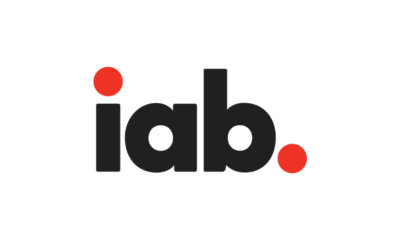Digital Market
AdSafeProtected: A Closer Look

AdSafeProtected is a domain owned by Integral Ad Science. It’s a tool used by various companies that deliver advertisements on popular websites like YouTube, Yahoo, and Google.
What is its purpose?
The primary function of AdSafeProtected is to ensure that the ads you see are safe and suitable for the audience. It helps
Verify ad content: Checks ads for inappropriate or harmful content.
Prevent ad fraud: Protects advertisers from fraudulent ad impressions.
Improve ad quality: Ensures ads are relevant and engaging.
Potential Issues
While AdSafeProtected is legitimate, it’s sometimes associated with problems like:
- Pop-up errors: These might be due to certificate issues and not necessarily a serious problem.
- Adware-related issues: In some cases, AdSafeProtected has been linked to adware, which can display intrusive ads and redirect you to unwanted websites.
What to do if you encounter problems
If you’re experiencing issues with AdSafeProtected, here are some steps you can take:
- Clear browser cookies and cache: This might resolve temporary problems.
- Update your browser: Ensure you’re using the latest version.
- Use an ad blocker: If you’re concerned about intrusive ads, consider using an ad blocker.
- Scan your computer for malware: If you suspect adware, run a thorough scan with reputable antivirus software. 1. What is adware? What you need to know to keep your system secure – N26 n26.com
Remember:
While AdSafeProtected itself is not malicious, it can be associated with other issues. If you continue to experience problems, it’s essential to take steps to protect your system.
Advertising
Chrome Says Cookie Crumbles: What You Need to Know about the Phase-Out

The internet is on the cusp of a major shift, and at the heart of it is Google Chrome’s decision to phase out third-party cookies. These tiny bits of data, long the workhorses of online advertising, are about to become relics of a bygone era. But what does this mean for you, the everyday web user? Buckle up, because we’re diving into the cookie jar to understand the implications of this sweet (or perhaps bitter) change.
Why the Cookie Crumble?
Third-party cookies have been under fire for years for their role in intrusive online tracking. They enable advertisers and other companies to follow your every click across the web, building detailed profiles used to target ads and personalize your experience. While this can be convenient at times, it also raises concerns about privacy and data rights.
Chrome, recognizing these concerns, is leading the charge towards a more privacy-focused web. Their goal is to replace third-party cookies with alternative solutions that allow for relevant advertising and personalized experiences without compromising user privacy.
The Timeline of Cookie Crumbling
The phase-out isn’t happening overnight. It’s a gradual process, unfolding in stages:
- Phase 1: Testing the Waters (January 2024): Currently, 1% of Chrome users globally are experiencing the cookie-less future firsthand. This testing phase allows websites and developers to adapt their practices and prepare for the wider rollout.
- Phase 2: The Rollout Begins (Late 2024): Expect to see a wider implementation of cookie restrictions throughout the latter half of 2024. This is where the impact for regular users might become more noticeable.
- Phase 3: Farewell, Third-Party Cookies (2025 and Beyond): By 2025, barring any unforeseen delays, we should see the complete removal of third-party cookies in Chrome. The new era of privacy-focused advertising and web experiences will be fully upon us.
What Does This Mean for You?
You might encounter some changes as the cookie era winds down. Here’s a glimpse:
- Fewer Targeted Ads: Prepare for less personalized ad experiences. While ads might still appear, they might be less relevant to your interests.
- Login Headaches: Websites that rely on third-party cookies for logins might require you to log in more frequently.
- Privacy Boost: You can breathe a sigh of relief knowing your online activity is being tracked less extensively.
The Future of the Web Cookie-Less
The phase-out of third-party cookies isn’t just about privacy. It’s about reshaping the internet into a more user-centric space. While challenges lie ahead, this shift holds the potential for a web that respects your privacy while still offering valuable experiences.
So, stay tuned as the cookie crumbles! The internet is in for a delicious makeover, and how it will taste… well, that remains to be seen. But one thing is certain: it’s time to ditch the cookie crumbs of the past and embrace a sweeter, more private future online.
Download Chrome here
Advertising
The Real-Time Magic: How Ads are Shown in Real-Time

Introduction
In the fast-paced world of digital advertising, the ability to serve ads in real-time has revolutionized the way marketers connect with their target audiences. Real-time ad serving ensures that the right ad is shown to the right user at the right moment, maximizing the effectiveness of advertising campaigns. In this article, we will delve into the intricacies of real-time ad serving, exploring the processes and technologies that enable this seamless and dynamic ad delivery.
Understanding Real-Time Ad Serving
Real-time ad serving refers to the process of delivering ads to users in immediate response to their online activities. It involves a series of complex steps that take place within milliseconds, enabling advertisers to make data-driven decisions and serve highly relevant ads. Here’s an overview of how real-time ad serving works:
- User Triggered Events: Real-time ad serving starts when a user interacts with a website, app, or other digital platforms. This interaction could include page loads, clicks, searches, or any other action that triggers an ad opportunity.
- Ad Request: When an ad opportunity arises, the publisher’s ad server sends a request to an ad exchange or supply-side platform (SSP). This request contains information about the user, such as their demographics, browsing behavior, and context of the page or app content.
- Auction and Bidding: Upon receiving the ad request, the ad exchange or SSP conducts a real-time auction, inviting multiple advertisers to bid for the available ad impression. Advertisers submit their bids, indicating the maximum amount they are willing to pay for the opportunity to display their ad to the specific user.
- Targeting and Decisioning: To determine the most suitable ad to display, the ad exchange or SSP considers various factors such as the bid price, relevance of the ad creative, targeting parameters, and campaign goals. Sophisticated algorithms and machine learning techniques are often employed to make these decisions.
- Ad Selection and Delivery: Once the auction is complete, the winning ad is selected based on the highest bid or other performance-related criteria. The ad is then sent back to the publisher’s ad server, which in turn delivers it to the user’s device.
- Ad Rendering: The user’s device receives the ad and renders it within the designated ad slot on the webpage or app. The ad is displayed to the user, typically accompanied by relevant content.
Benefits of Real-Time Ad Serving
- Increased Relevance: Real-time ad serving enables advertisers to leverage user data and contextual information to deliver highly relevant ads. This relevance enhances user experience, increases engagement, and boosts the chances of ad conversion.
- Dynamic Ad Optimization: Real-time ad serving allows advertisers to continuously optimize their campaigns based on real-time data and user responses. This flexibility enables them to adjust targeting, creative elements, and bidding strategies on the fly, maximizing campaign performance.
- Efficient Resource Allocation: By conducting real-time auctions, advertisers can allocate their advertising budgets more efficiently. They can prioritize ad placements that yield better results and optimize their spending in real-time based on performance metrics and user responses.
- Timely Campaign Delivery: Real-time ad serving ensures that ads are delivered promptly, aligning with the user’s immediate interests and needs. This timeliness enhances the impact and effectiveness of advertising efforts.
Conclusion
Real-time ad serving has transformed the digital advertising landscape by enabling marketers to deliver personalized, relevant, and engaging ads to their target audiences. Through sophisticated algorithms, data-driven decisioning, and real-time auctions, advertisers can optimize their campaigns, allocate resources efficiently, and deliver ads that resonate with users. As technology continues to advance, real-time ad serving will undoubtedly play a pivotal role in shaping the future of digital advertising, empowering marketers to create meaningful connections with their audiences
Reference from iab: link
Read more on: www.iabuk.com
Digital Market
Deterministic and Probabilistic Models in Advertising: Maximizing Audience Insights and Campaign Performance

Title: Deterministic and Probabilistic Models in Advertising: Maximizing Audience Insights and Campaign Performance
Introduction:
In the world of advertising, reaching the right audience with the right message is crucial for campaign success. Deterministic and probabilistic models play a vital role in helping advertisers optimize their targeting strategies by leveraging audience data and insights. In this article, we explore the differences between deterministic and probabilistic models in advertising, their benefits, and how they contribute to driving effective and efficient advertising campaigns.
Understanding Deterministic and Probabilistic Models:
Deterministic and probabilistic models are two distinct approaches used to analyze and understand audience behavior in advertising.
- Deterministic Models: Deterministic models rely on precise, identifiable data points to establish a clear and direct link between users and their behaviors. This data is collected from authenticated user information, such as login credentials or registration data, allowing advertisers to accurately target specific individuals or segments. Deterministic models provide high accuracy in audience targeting and personalization, ensuring tailored ad experiences. However, they are often limited to users who have willingly shared their information, resulting in a narrower reach.
- Probabilistic Models: Probabilistic models, on the other hand, utilize statistical algorithms and machine learning techniques to make predictions and draw insights from anonymized data. These models analyze a wide range of data signals, including browsing behavior, device information, location, and contextual data, to create probabilistic associations between users and their characteristics. Probabilistic models leverage patterns and correlations in the data to make educated guesses about audience segments. While probabilistic models provide a broader reach by including users without explicit identification, their accuracy may be lower compared to deterministic models.
Benefits and Applications of Deterministic and Probabilistic Models:
- Deterministic Models:
- Precise Audience Targeting: Deterministic models allow advertisers to reach specific individuals or segments based on verified user data, enabling highly targeted campaigns.
- Personalization and Customization: With deterministic models, advertisers can deliver personalized ad experiences, tailoring messages and creative elements to individual preferences and behaviors.
- Improved ROI and Conversion Rates: The accuracy of deterministic models increases the likelihood of reaching engaged audiences, leading to improved ROI and higher conversion rates.
- Probabilistic Models:
- Extended Reach: Probabilistic models leverage a broader range of data signals to include users without explicit identification, expanding the reach of advertising campaigns.
- Cost Efficiency: By reaching a larger audience and optimizing ad placements based on statistical predictions, probabilistic models offer cost-effective targeting options.
- Insights and Trends: Probabilistic models provide valuable insights into audience behaviors, trends, and patterns, allowing advertisers to uncover new audience segments and refine targeting strategies.
Combining Deterministic and Probabilistic Approaches:
In practice, many advertisers employ a combination of deterministic and probabilistic approaches to maximize the benefits of both models. This hybrid approach leverages the accuracy and precision of deterministic models while extending reach and optimizing cost-efficiency through probabilistic techniques. By integrating deterministic and probabilistic data, advertisers can create more comprehensive audience profiles, deliver personalized experiences at scale, and achieve a balance between accuracy and reach.
Conclusion:
Deterministic and probabilistic models serve as powerful tools in the realm of advertising, enabling advertisers to optimize their targeting strategies and enhance campaign performance. While deterministic models offer precise targeting and personalization, probabilistic models provide extended reach and cost-efficiency. By leveraging the strengths of both models, advertisers can unlock valuable audience insights, reach the right users at the right time, and drive impactful advertising campaigns. Understanding the differences between deterministic and probabilistic models empowers advertisers to make informed decisions, refine targeting strategies, and achieve their marketing goals in the ever-evolving advertising landscape.
-

 Ad Tech1 year ago
Ad Tech1 year agoWhat is Ad Stitching?
-

 Featured1 year ago
Featured1 year agoHow to find TCF String – Chrome Network Tab?
-

 1 year ago
1 year agoHow to verify TC String’s origin from a CMP participating in the IAB Transparency and Consent Framework (TCF)
-

 1 year ago
1 year agoConquering the Living Room: Top 5 Ad Servers for CTV Domination in 2024
-

 Ad Tech1 year ago
Ad Tech1 year agoAI on Advertising
-

 1 year ago
1 year agoCutting the Cord, Not the Ads: How OTT Advertising Works
-

 Advertising1 year ago
Advertising1 year agoChrome Says Cookie Crumbles: What You Need to Know about the Phase-Out
-

 Ad Tech2 years ago
Ad Tech2 years agoXandr Advertising: Unlocking the Potential of Advanced Advertising Solutions






